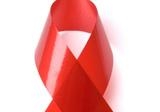Hep C down, chlamydia up
The spread of hepatitis C has halved over the past decade, while chlamydia continues to rise, according to research released by UNSW's National HIV Research Centres.
The spread of hepatitis C has halved over the past decade, while chlamydia continues to rise, according to research released by UNSW's National HIV Research Centres.

Rates of hepatitis C infections have halved in the past decade, particularly in younger age groups, according to UNSW research presented at a major conference today.
It is among the key findings of "HIV/AIDS, viral hepatitis and sexually transmitted infections in Australia Annual Surveillance Report 2009" - one of three reports released by UNSW's National HIV Research Centres at the Australasian HIV/AIDS Conference in Brisbane.
Despite the decline in hepatitis C infection rates overall, prevalence remains high among injecting drug users across Australia and the burden of advanced liver disease continues to grow.
The number of new HIV diagnoses has plateaued over the past three years at about 1,000 cases annually.
The report also shows that chlamydia continues to be the most frequently reported sexually transmitted infection, rising 10 percent on last year's figures.
If left untreated, chlamydia can lead to ectopic pregnancy and infertility.
"This could be due to increases in testing but chlamydia continues to affect young people having unprotected sex," said Associate Professor David Wilson, head of the Surveillance and Evaluation Program for Public Health at the National Centre in HIV Epidemiology and Clinical Research.
Those most at risk are those between 15 and 25 years of age.
Other findings in research reports include:
For the full report on HIV/AIDS, viral hepatitis and sexually transmitted infections, go to the National Centre in HIV Epidemiology and Clinical Research website.